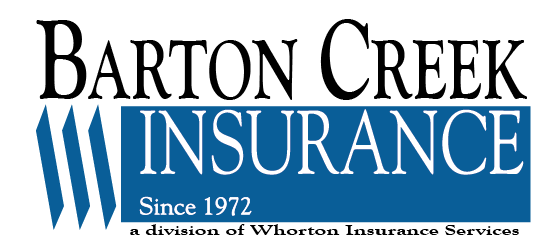Contact Us
Client Support
We have a client portal that will allow you to get AUTO ID Cards Certificates of Insurance and request changes. You will have to request a login from the Account Manager that handles your insurance.
Send us an email or use the Form on this page to request ONLINE ACCESS to your account.
512-372-2222
Claims
1. Safety First
If the car accident is minor, move vehicles out of traffic to a safe place.
Shift into park, turn off your vehicle, and turn on the hazard lights.
Use cones, warning triangles, or flares for added safety, if you have them.
2. Get Help
Check for injuries; call an ambulance when in doubt.
Call the police, even if the accident is minor. A police report can be invaluable to the claim process and help establish who’s at fault.
3. Collect Information
Gather information from others involved in the accident.
Drivers and passengers: names and contact information.
Vehicle descriptions (make, model, year).
Driver’s license numbers – License plate numbers.
Insurance companies and policy numbers.
Eyewitnesses: names and contact information.
Accident scene location and/or address.
Police officer’s name and badge number.
Take photos of all vehicles involved and the accident scene, if it is safe to do so.
Do not sign any document unless it’s for the police or your insurance agent.
Be polite, but don’t tell anyone the accident was your fault, even if you think it was.
4. File a Claim
You can start the claim process immediately with the Insurance Carrier your home is written through.
CLAIMS NUMBERS
Notify Us. Call your account manager direct or call us at 800.945.1191
5. Get Roadside Assistance.
- Stop the water at its source. Unless the flooding is due to an act of nature, find the source of the water and turn it off or seal it.
- Turn off the electricity. After the source of the water has been stopped, turn off all electrical systems in your home—but don’t walk through water to get to the.
- Evacuate the premises. If a burst pipe or sewage leak is the issue, evacuate the premises and find a dry, safe spot outside of your home.
- Call for help. Once your family members—both two-legged and four-legged—are on dry ground, call for help. If anyone needs medical attention, call 911.
- Document everything. When thinking about what to do if your house floods, the first thing that probably comes to mind is cleaning up the mess.
- Start the cleanup process. Cleaning up after a flood is a long, arduous process. Prevent mold damage. Aside from the immediate loss of personal property to water damage, there is secondary damage to consider. Here is a short list of things to consider:
-
- Prop Up Upholstery: Remove all loose cushions and prop up upholstered furniture. That way, you’ll keep your furniture as dry as possible during the process.
- Manage Area Rugs and Obstacles: Remove rugs and pick up any items that may be sitting on the floor. In these situations, they can make your trip and cause several accidents.
- Protect Valuables: Moving paintings, artworks, or other valuable items is essential. Hang leather apparel or other clothes to dry at room temperature. With the air conditioner on, the process will be quite fast.
- Protect your Furniture: Put foil or plastic under furniture legs on wet carpet or floor. Also, open drawers to facilitate the drying process of closed spaces.
5 Things To Do After a House Fire
- Contact your insurance company or insurance agent immediately by telephone, in writing, or in-person to report the loss and begin the claim process. Make sure that you have all pertinent information about the date and time of the fire, location, cause (if known), amount of damage done to your home and/or its contents, plus any other factors related to your claim. A lot of this information is included in the fire report. You can obtain a copy from your local fire department. Keep in mind that this fire report may not be available due to specific fire causes or state regulations.
- Taking pictures is a must! After a house fire, most people are so overwhelmed with the situation, and the loss, they may forget to photograph everything right away before there’s further damage or items are removed. As soon as it’s safe to do so, take as many pictures of the damaged property as possible.
- Fill out your insurance claim form completely, but don’t sign it until all information on the form is correct. Also, be sure to attach supporting documents listed in the policy (examples: receipts for temporary housing costs; contractor estimates plus proof of payment). Your insurance company will not make full payment until all required documentation has been submitted.
- If you have received an estimate from your insurance agent or claims adjuster, do not accept it as final unless it is satisfactory to you. Most policies require that you approve any payment due before it can be made by the insurance carrier.
- As soon as possible after the home fire, you will need to find somewhere to stay during the recovery process. For additional living expenses, ask your agent about vouchers that you can give to your hotel or motel and the time period for reimbursement.
coming soon
coming soon
coming soon
Insurance Assessment
If you need support which is not urgent, then answer the questions below and we will follow-up with you..
512-372.2222
Request a Certificate of Insurance (COI)
A certificate of insurance (COI) is issued by an insurance company or broker and verifies the existence of an insurance policy.
You Can Find Us At
Austin – Barton Creek
(512) 372-2222
Barton Creek
2800 Barton Creek Blvd.
Austin, TX 78735
Bee Cave
(512) 372-2244
14630 Falcon Head Blvd,
Suite 100A
Bee Cave TX 78738
Round Rock
(512) 255-3172
101 E. Old Settlers
Blvd #160
Round Rock, TX 78664
Austin – Arboretum
(512) 338-1191
Arboretum
11200 Jollyville Rd
Austin, TX 78759
Los Angeles
(310) 410-0070
10866 Wilshire Blvd #1650
Los Angeles, CA 90024
Monday – Friday 8:00AM – 5:00PM

